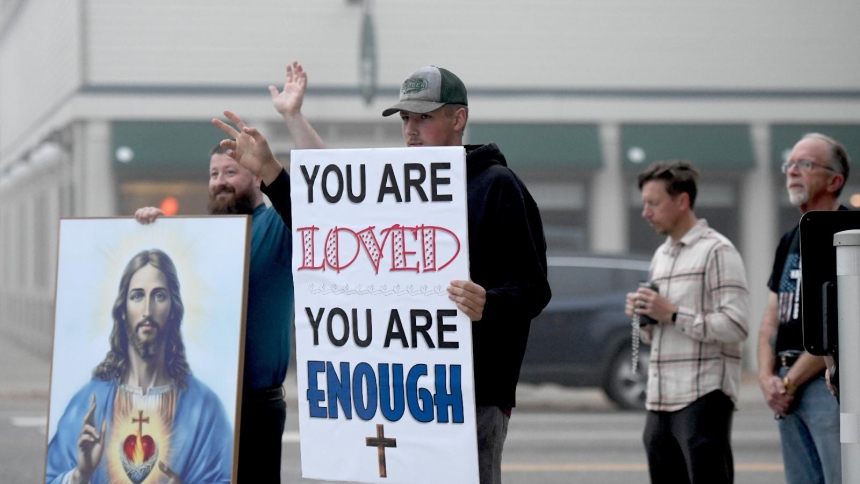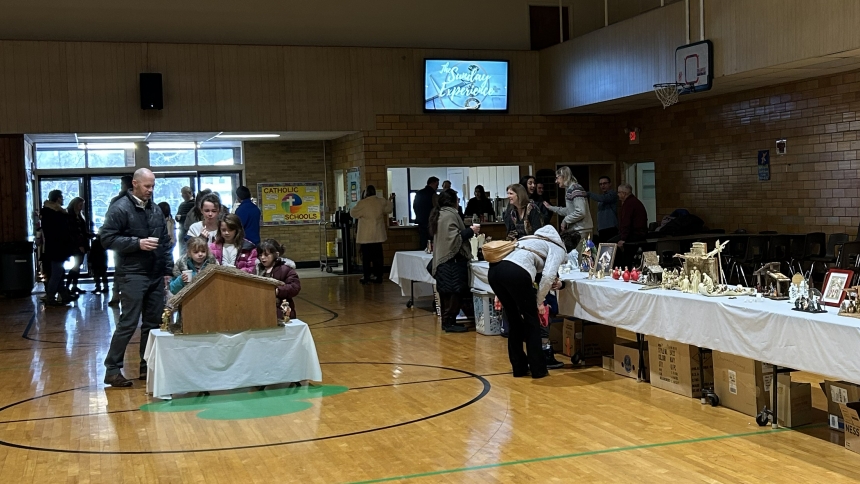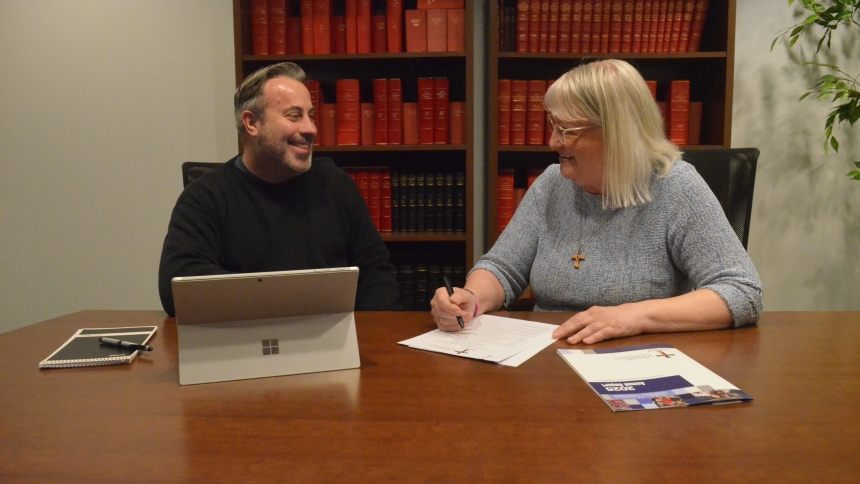
All these years later, I have kept my key to the World Trade Center in New York City. It’s the key I was given the first day I started working on the 64th floor of Tower One. That was back in 1986 when I was a graduate student in public policy and administration at Columbia University. The key is generically labelled “World Trade Center.” In truth, it could only be used to gain access to the men’s room on the 64th floor. Still, I kept it as a memento of my work there for an economic development agency.
When terrorists used planes to destroy the towers and their inhabitants, I along with the rest of the world, was shocked and saddened. Each of us has our own account of where we were and how we found out about those horrific acts. On Sept. 11, 2001, I was leading a group of pilgrims. We flew out of the Holy Land the evening of the 10th and the 11th was our first day in Rome. My experience of those days that followed was marked with mercy and a deeper conviction about the Triumph of the Cross of Christ.
Having lived in Rome for five years as a student priest, I could often detect a certain “love/hate” relationship that some Europeans have for American tourists. They genuinely are happy to have us visit their beautiful lands, but we Americans can sometimes live up to the stereotypes of being the loudest and most brash as we traverse these cultures and settings.
In the days following Sept. 11, that “love/hate” changed to all “love.” The Italians were unambiguous – if you were an American, you were given extraordinary love and mercy. People were in tears coming up to us, expressing their love and solidarity. Almost unheard of, shopkeepers would give away their items free to Americans. They wanted to do something to express solidarity with us.
Such acts illustrate that in moments of crisis and pain, a beautiful silver lining can sometimes arise, revealing kindness, compassion, love.
As our pilgrimage continued, our next stop was Assisi and the land of St. Francis. While the world was absorbing the horrific news, our time of prayer intensified. We timed our visit to coincide with the Feast of the Triumph of the Cross. On that date, Sept. 14, in the year 1224, Saint Francis received the stigmata: the wounds of Christ were impressed upon the body of Francis.
In trying to spiritually absorb the horror of the attacks upon the United States, there was an image that came to me and became the focus of my preaching in the small chapel marking where St. Francis was configured more closely to the sufferings of Jesus.
The image is that of Jesus on the Cross and each of the towers resting on his shoulders. The towers then come crashing down onto each shoulder as they came crashing to earth. The shoulders of Jesus are big enough to absorb all the pain and sin and suffering of that day. His shoulders are big enough to take all the sins of the whole world collectively from the first sin of Adam through today and into the future.
When people ask, “Where is God in the midst of such suffering?” our answer is: “He’s right there with us. He’s on the Cross.” Our suffering is joined to his. To be a Christian doesn’t mean we will have all the answers as to why some people suffer and why pain is still in the world, but we do have a place to put all our pain: on the Cross of Christ. Jesus’ shoulders are big enough. His heart is tender and full of love. He’s been there and is still there with us.
The Cross is a place of Triumph as Jesus’ death and resurrection is the pathway to new life. Let’s place all our pain on his shoulders, receive his mercy, and show that mercy to others. Let’s experience the Triumph of the Cross.
Your servant,
The Most Reverend Robert J. McClory
Bishop
Diocese of Gary


